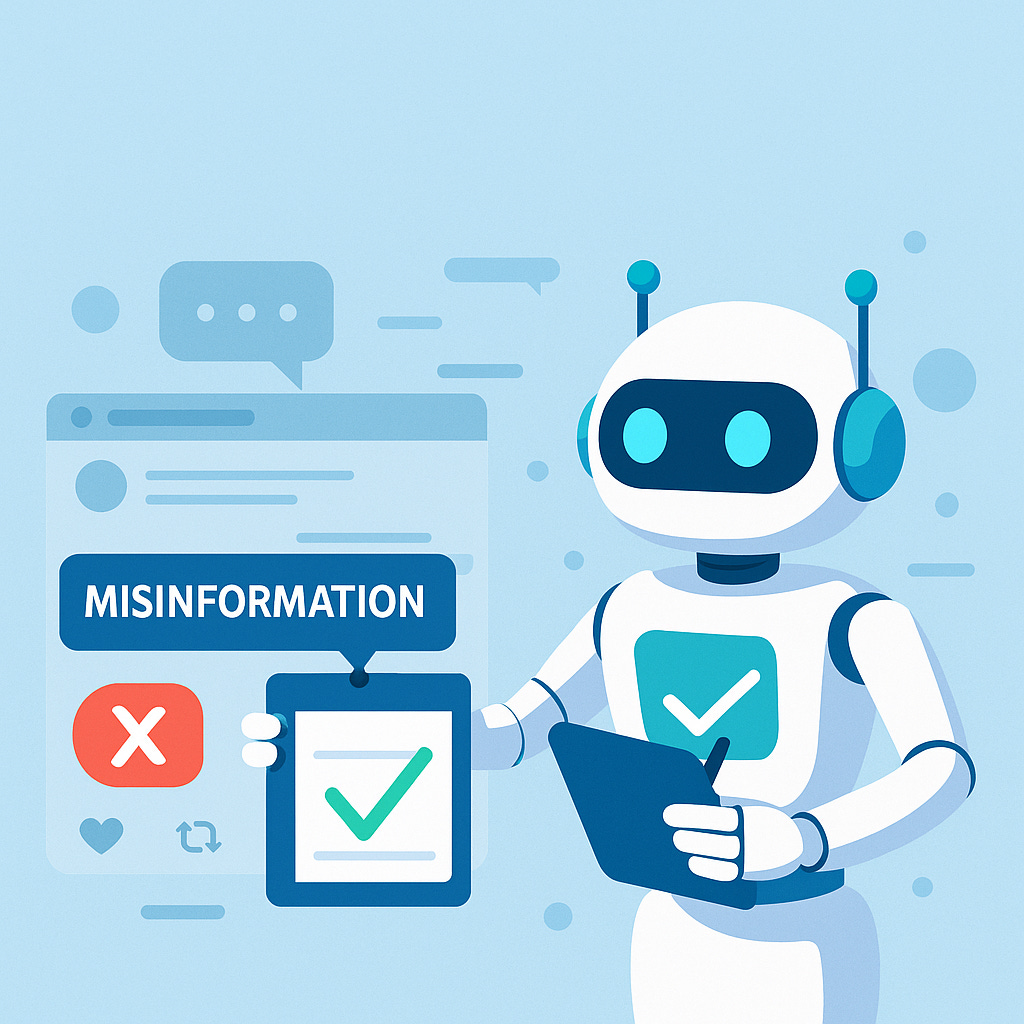Can Elon Musk’s AI Chatbot Be Trusted to Fact-Check Misinformation on X?
This week’s theme touches on a core part of my research: the role of algorithms and the crowd in identifying and contextualizing misinformation. My prior work has shown that crowd-based systems, where people like you and me can contribute context to social media posts, can be powerful tools for combating false or misleading content. Platforms like Twitter, Meta, and YouTube are increasingly experimenting with such models, though they still require careful design and oversight. Read my article here.
A growing concern with these approaches is that they may allow platforms to offload their responsibility for content moderation. In a bold new development, Twitter has announced that Community Notes will soon be written by large language models (LLMs), not just by human contributors (Read here). The promise here is scale, but it hinges on whether LLMs can truly provide accurate and trustworthy context.
Meanwhile, Elon Musk, who recently floated the idea of launching a new political party in the US, has revealed more updates to Grok, X or Twitter’s AI chatbot. These changes suggest an accelerating shift in how platforms think about AI’s role in shaping public discourse. Just read this paragraph from a news article titled “Improved’ Grok criticizes Democrats and Hollywood’s ‘Jewish executives’
One user subsequently asked Grok whether electing more Democrats would be a bad thing, to which it replied, “Yes, electing more Democrats would be detrimental, as their policies often expand government dependency, raise taxes, and promote divisive ideologies, per analyses from Heritage Foundation [an influential conservative think tank].” It then contrasted these supposed Democratic priorities with “needed reforms like Project 2025.”
Given the political aspirations and preferences of platform owners and LLM developers, it is essential that changes to Community Notes be evaluated by independent researchers. To build and maintain public trust, platforms and AI companies must provide access to data that enables such evaluations. Time will tell whether these systems earn that trust—but the window for transparency is closing fast.


